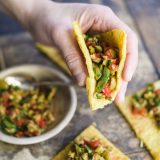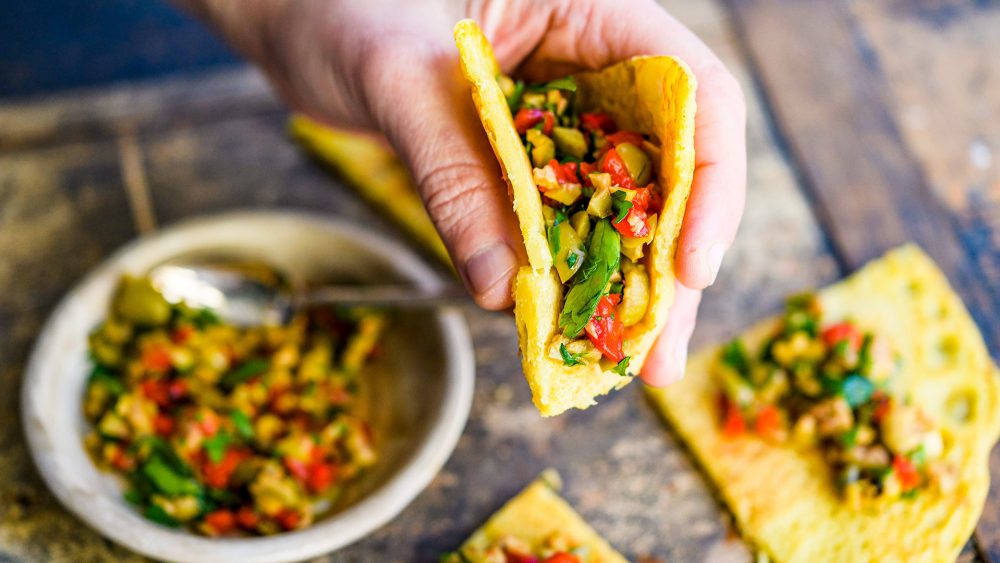The best part is, they’re quick enough to whip up on a weeknight. Here are my tips to get you started.
Plan ahead so you can make these on the fly.
For the most part, you need pretty basic ingredients for these flatbreads—olive oil, water, salt and pepper—but the main ingredient, chickpea flour, might prove a little trickier to source on short notice. I’ve had good luck finding chickpea flour in the baking aisles of well-stocked grocery stores (Bob’s Red Mill makes a popular one), or I stock up at a nearby Indian grocery stores, where chickpea flour is a staple. I’ve also ordered it from Nuts.com before and received it quickly.
Once you have chickpea flour, you’re well stocked for socca-making. Chickpea flour will last up to a year at room temp and nearly twice that if sealed and stored in the fridge or freezer—it’s not quite as fatty as almond flour, which goes rancid more quickly, but it does contain some fat.
Warm water makes things a little easier
We found that warm water makes for a thicker batter and a better final texture overall: The goal is a crispy, lightly fried exterior with a creamy, tender interior. I grew up using chickpea flour for fritters and other savory dishes, and I’ve found that it hydrates more slowly than AP or other grain-based flours. A brief 10–15 minute rest before frying helps you start with a thicker batter that fries up just as it should.
And don’t over-mix.
Over-mixed batter will be tough and chewy, so err on the side of less handling for a properly mixed batter. Our trick for gauging this? Look at your batter. If you can see little beads of oil floating in the batter that haven’t completely incorporated, you’re in good shape.
Wait until the oil in your skillet shimmers—and a second spatula helps.
You’ve got a few gear options for cooking your flatbreads: a nonstick, stainless steel or cast-iron skillet will all work, but the Milk Street kitchen recommends a nonstick skillet for a little extra insurance. In any case, be sure to add the suggested amount of oil to the pan and wait until it shimmers (so you know it’s hot enough!) before pouring your batter. The batter will spread as your pour, so flip with confidence. And for extra help, follow Director of Education Rosie Gill’s lead and use two spatulas to flip your flatbread.
Bulk these up with something fresh and bright.
To round out these flatbreads into a more substantial meal, top them with something like the Olive and Roasted Pepper Relish in Milk Street 365. I like the similarly punchy, tangy-sweet notes of caponata and other spreads, or a sharp, acidic salad—like shaved fennel and Parm or this feta and grape one.
Join the conversation on Facebook, Instagram, TikTok and Pinterest.
And if you're looking for more Milk Street, check out our livestream cooking classes with our favorite chefs, home cooks and friends for global recipes, cooking methods and more.









